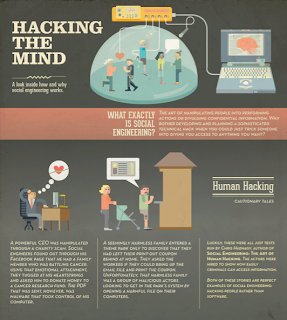(This is Part Two in a two-part series about the expectations of learning relationships. Please check our previous post in Part One: "5 Things Students Expect From Their Teachers.")
More and more in recent years, we've started referring to the kids in our classes as "learners" rather than "students." It began unintentionally but became more and more frequent. We gradually realized that the relationship between learner and educator is not always the same as between student and teacher. As we explored earlier in the "
5 Things Students Expect From Their Teachers," we are shaping our goals for new school year, and we're trying to consider an even more nuanced connection between any learner and his or her guide.
A learner is someone who seeks knowledge, who solicits professional development, who values links from a Twitter PLN, or who watches YouTube videos to hone a skill. Employees and entrepreneurs, welders and poets all further themselves by seeking insights from a trusted specialist. Any interaction that results in greater understanding or proficiency forges a learner/educator bond.
The word "learner" suggests an open-mindedness and a self-initiation. The word "student," however, implies a hierarchy. It defines a status, where one is the instructor and the other is the pupil. This difference is akin to actively enrolling in a class versus being at the mercy of a class. It is the difference between training and tutelage, between aficionado and authority.
We’ve all experienced the letdown of learning, whether at disappointing conferences or half-hearted meetings. As both educators and life-long learners, therefore, we want to make every effort to cultivate scholarship by aligning realistic expectations.
What do learners expect from their educators?
Expertise
Any learner who willingly admits that they do not know something is relying on the expertise of the person at the podium or the webcam. A genuine educator needs a reflexive, virtuoso mastery of the content, so they can then focus on the complicated business of information delivery. Their prowess should be evident and even taken for granted, so the learners can feel safe. Novices can know they won't be led astray or put to the mercy of someone bluffing through sessions in exchange for a paycheck.
Clearly Delineated Goals
To march hand-in-hand with a coach means that there should be targeted, mutually agreed upon goals. Physical therapists and personal trainers know this, but sometimes traditional classrooms or webinars avoid this crisp delineation in favor of generalized discussion. Jointly designed benchmarks and precise assessments can ensure that every moment matters. For both adult learners and middle schoolers, a specific end is critical to seeing a process through with motivation.
Mentorship
Hesitation and insecurity are natural byproducts of learning. Coming to grips with a difficult skill often requires asking for help. In this confession, the apprentice hopes for a mentor's empathy. Mentorship means partnership. A mentor's role is one part confidante and another part older sibling. It involves the sharing of wisdom and the patience of listening. Even in a crowded classroom, a teacher can try to remember this counseling, advising mindset that lets every learner feel heard.
Feedback
Feedback is perhaps the most difficult thing to give and, therefore, the rarest dynamic in learning. Authentic feedback takes time. It requires a bias-free, assumption-free language to offer constructive advice. Knee-jerk criticism and empty praise are not feedback. In fact, they do more harm than good. Feedback is one-to-one, honest, actionable input about what went well, what didn't, and what steps can be taken to go forward.
Deftness With Necessary Tools
A valued educator needs a fluency with the most apt resources for his or her field. Even a talented professional will draw skepticism if he can't nimbly negotiate the tools of his trade. A chef with a sophisticated palate will still be circumspect if she can't effectively wield her knives. An architect with a revolutionary design will still invite worry if he couldn't safely construct his home. This agility refers both to the latest instruments and the time-honored implements. We can't force children to use typewriters just because we did when we were their age.


























